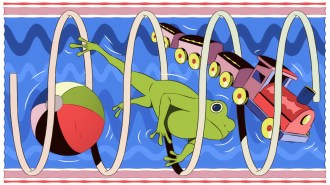From the February 6, 1932, issue
EVERY SNOWFLAKE A UNIQUE JEWEL

Up in the mountains of Vermont, where the winters are long and the snow falls frequently, there died a few weeks ago a quiet, retiring man who was the worlds foremost snow artist. His name was Wilson Bentley. He was not one of the numerous tribe of Michelangelos of melting marble, whose snow sculptures get into the newsreels and rotogravure sections. His was a far more difficult art, for it dealt with single flakes rather than great lumps of matted snow; yet though it dealt with single flakes, it was a more permanent art than the efforts of these gravers of Earths most impermanent plastic.
For Wilson Bentley made photographs of snowflakes: he was Portraiteur to Their Highnesses, the faery daughters of Old King Boreas. For more than 40 years, he let the winds of the world bring beauty to his humble doorstep on a small farm near the village called Jericho; he captured it in its most fragile form and held it for a moment while the chilled kiss of the cloud-hidden sun has graven its lineaments in the invisible silver grains of photographic plates. For 40 years he accumulated his portraits of princesses in frosty filigree, treasuring them as a less wise man might treasure the jewels they resemble or fine silver pieces whose smiths might learn lessons from their incredibly exquisite patterns. For at least a part of the 40 years he had recognition from a few: scientists who would read the riddles of the weather, artists who love beauty and will follow her even to Jericho. But the world heeded him not, nor knew his work.
SCIENTISTS WORK TO FRESHEN STALE AIR WITH ELECTRICITY
Conclusive evidence that minute electrified particles of the air, known to scientists as ions, are the real cause of fresh, invigorating atmosphere is being sought at the Harvard School of Public Health in Boston by Prof. C.P. Yaglou, assisted by L. Claribel Benjamin and Sarah P. Choate, technicians. These workers reported results of their research before the annual meeting of the American Society of Heating and Ventilating Engineers.
The studies consisted chiefly in measuring the number of ions in different kinds of atmosphere. They indicate that atmosphere which is considered deadening to the breather is likely to contain only a small number of ions per unit of volume.
PHOTOGRAPHS RECORD HIGH SPEEDS OF ATOMIC HEARTS
World record speeds of hydrogen atomic hearts, pushed along by the pressure of 1,000,000 volts, have been photographed, investigators at the Department of Terrestrial Magnetism of the Carnegie Institution of Washington have announced to the American Physical Society. Their speed was 13,400 miles per second.
The high-speed protons, as the hydrogen atom hearts are called, were allowed to plunge into a moist atmosphere in a Wilson cloud chamber, and snapshots were taken of the tracks made in the cloud by the atomic projectiles.






